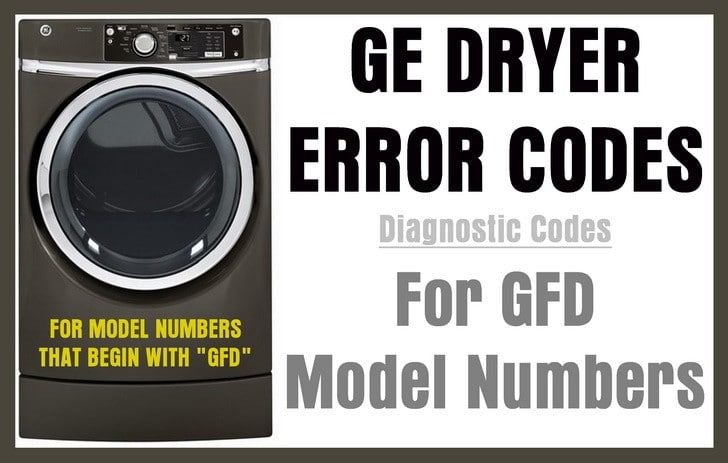
Error codes on appliances like dryers are designed to alert you to potential issues. They’re a bit like the check engine light in your car. If you ignore them, you might be able to squeak by for a little while, but the underlying problem isn’t going to fix itself — it often gets worse. The F1 error code on a GE dryer indicates a specific issue that, while it might not seem critical at first glance, could lead to bigger problems if left unattended. So, let’s dive into what this error code means and what steps you should take to address it.
Understanding the F1 Error Code
The F1 error code on a GE dryer is a signal that there’s an issue with the dryer’s electrical system. Think of it like a red flag waving at you from the control panel, trying to get your attention. Typically, this code appears when there’s a problem with the dryer’s main control board, which is like the brain of the appliance. Without it functioning properly, the dryer can’t communicate internally about what commands you want it to execute.
Now, you might wonder, “Isn’t it just a tiny glitch that will go away on its own?” Well, the F1 error isn’t just a temporary blip. If we liken your dryer to a human body, the control board is like the central nervous system. If it’s malfunctioning, none of the dryer’s other parts can work as they should. Ignoring it might not seem like a big deal at first, but it could lead to complete equipment failure down the line.
If the error code keeps popping up or if the dryer refuses to start or finish cycles, you’re looking at more than an annoying inconvenience. It’s a call to action to either troubleshoot or call in a professional. Let’s look at how you can tackle this situation.
Steps to Address the F1 Error
First things first, if you see the F1 error code, don’t panic. Start by doing a simple reset of your dryer. Unplug it from the power source for about five minutes. This is similar to restarting your computer when it freezes up — a fresh start can sometimes clear minor bugs. After plugging it back in, try running a cycle to see if the error persists. If the dryer is working fine after this, it might have been a one-time glitch.
However, if the error appears again, it’s time to roll up your sleeves and dive deeper. Check the dryer’s wiring connections, especially if you’re comfortable doing so. Loose or damaged wires can often trigger error codes, causing the unit to misbehave. If you’re not comfortable checking the wiring yourself, or if you suspect a more complex electrical issue, contact a professional technician.
The main control board might need to be replaced if the error is persistent. This is not a minor fix and usually requires professional assistance, as it involves in-depth knowledge of the appliance’s workings. The tech will be able to confirm if the control board is the culprit and suggest the best course of action.
Consequences of Ignoring the Error
Ignoring the F1 error code might seem like an easy way to bypass an immediate headache, but this tactic can lead to more severe issues. For one, the dryer could stop working altogether at the most inopportune time, like when you’re trying to prepare for an important event or a busy week. What’s worse, a malfunctioning dryer can sometimes lead to safety hazards, such as overheating.
Consider this: ignoring the F1 error is like ignoring a flat tire on your car. You might be able to drive for a few more miles, but eventually, the wheel will give out, possibly leaving you stranded. Similarly, not addressing the F1 code can escalate into a costly repair that far exceeds the cost of a simple fix or routine maintenance.
In the long run, attending to the F1 error not only ensures your dryer runs efficiently but also extends its lifespan. You’ll save money on energy bills because the machine won’t be straining to work against an unresolved issue. Plus, you’ll have peace of mind knowing your appliance operates safely.
Prevention Tips and Final Thoughts
The best way to avoid the headache of error codes is by maintaining your dryer regularly. Keep the lint filter clean, ensure proper ventilation, and don’t overload the machine. Regularly check for signs of wear and tear, particularly in the electrical components, and schedule professional maintenance every once in a while.
In conclusion, while the error code F1 can be annoying, it’s essential not to ignore it. Taking immediate action to diagnose and resolve the issue will prevent further damage and save you money and hassle in the long-term. Remember, just like with any appliance, a little bit of care today can save you a lot of trouble tomorrow. So the next time you see that F1 code, you’ll know exactly what to do!